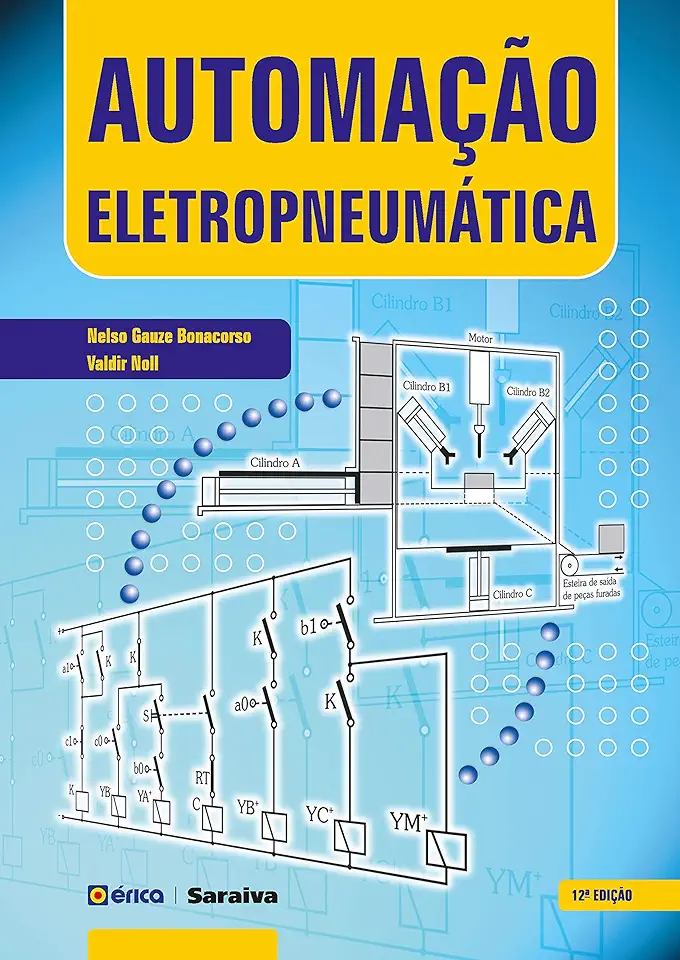
Electro-pneumatic Automation - Nelso Gauze Bonacorso / Valdir Noll
Electro-pneumatic Automation: A Comprehensive Guide to Industrial Automation Systems
Introduction
In today's fast-paced industrial environment, automation is key to achieving efficiency, productivity, and safety. Electro-pneumatic automation systems, which combine the power of electrical and pneumatic technologies, offer a versatile and reliable solution for automating various industrial processes. This comprehensive guide by Nelso Gauze Bonacorso and Valdir Noll provides a thorough understanding of electro-pneumatic automation, from its basic principles to advanced applications.
Key Features:
- Comprehensive Coverage: The book covers a wide range of topics, including electrical circuits, pneumatic systems, electro-pneumatic components, and control systems.
- Practical Approach: Numerous real-world examples, illustrations, and exercises help readers grasp the concepts and apply them in practical scenarios.
- Step-by-Step Tutorials: Detailed tutorials guide readers through the process of designing, building, and troubleshooting electro-pneumatic systems.
- Industrial Applications: The book explores various industrial applications of electro-pneumatic automation, such as robotics, packaging, and material handling.
Chapter Overview:
Chapter 1: Introduction to Electro-pneumatic Automation
- Provides an overview of electro-pneumatic automation and its advantages in industrial automation.
Chapter 2: Electrical Circuits
- Covers the basics of electrical circuits, including components, symbols, and circuit analysis.
Chapter 3: Pneumatic Systems
- Introduces the principles of pneumatics, including compressors, valves, cylinders, and actuators.
Chapter 4: Electro-pneumatic Components
- Discusses various electro-pneumatic components, such as solenoid valves, pressure switches, and sensors.
Chapter 5: Control Systems
- Explores different control systems used in electro-pneumatic automation, including programmable logic controllers (PLCs) and human-machine interfaces (HMIs).
Chapter 6: Design and Implementation
- Provides a step-by-step guide to designing and implementing electro-pneumatic systems.
Chapter 7: Troubleshooting
- Offers practical tips and techniques for troubleshooting electro-pneumatic systems.
Chapter 8: Industrial Applications
- Presents real-world examples of electro-pneumatic automation in various industries.
Benefits of Electro-pneumatic Automation:
- Increased Efficiency: Electro-pneumatic systems automate repetitive tasks, reducing labor costs and improving productivity.
- Enhanced Safety: By automating hazardous or repetitive tasks, electro-pneumatic systems minimize the risk of accidents and injuries.
- Improved Quality: Automation ensures consistent product quality by eliminating human error.
- Reduced Downtime: Electro-pneumatic systems are reliable and require minimal maintenance, reducing downtime and increasing uptime.
Conclusion:
"Electro-pneumatic Automation" by Nelso Gauze Bonacorso and Valdir Noll is an invaluable resource for engineers, technicians, and students seeking to understand and implement electro-pneumatic automation systems. With its comprehensive coverage, practical approach, and real-world examples, this book is a must-have for anyone looking to harness the power of automation in industrial settings.